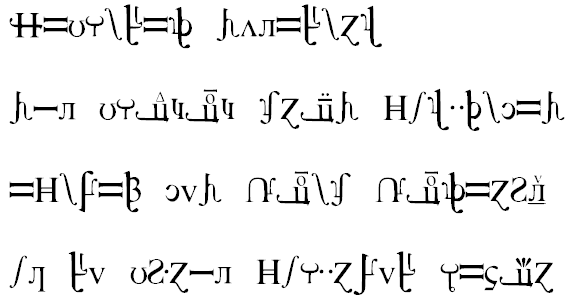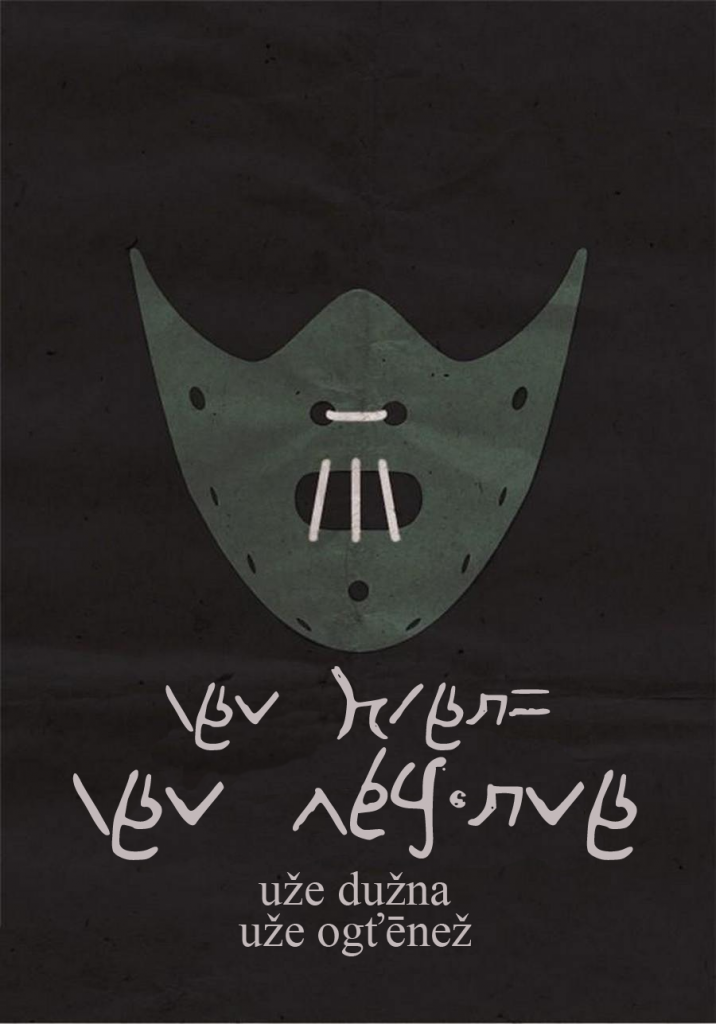Orthography is, in its simplest terms, how you write a language. You probably don’t think of it much, but the written word is in your face all day. It probably becomes invisible to you until confronted with the foreign. Arabic, Hindi, Cyrillic, Greek, Japanese, Chinese characters stand out because they are intrinsically meaningless to a non-speaker, or should I say non-reader. It takes time and effort to learn and eventually see through the new script. But we also rarely think about how even the same alphabet is used for different languages.
For instance, I’ve posted quite a bit of Irish on here. One of the things that makes Irish so strange and so hard to pick up is that it is essentially incompatible with the Latin alphabet. Some things are easy, like mór is pretty easy to figure out. It’s sort of like more in English. What about mhór? Can you figure out that it is like war English? Or are you stuck on that ‘h’ in the middle? What about Maidin mhaith? Maiden wath? What about “mazin wa”?
H does weird things in Irish.
Orthography is also important in translating, specifically in what is called transliteration. Transliteration is taking a language from its native orthography and putting it into a foreign orthography. When I post translations here it is always in two forms of Latin Orthography – the extended and the simplified (basically one that I use when able and one that is better compatible with reddit and this site).
Some languages are easy to transliterate. Usually because they use similar alphabets to ours. Take German, which uses an extended Latin alphabet. Fußball is easily made Fussball. Bäume is easily made Baeume. But what about Chinese? Or Korean? That gets a little harder.
Anyway, Hadysh is pretty easy to transliterate. It uses a very “shallow” orthography. That is to say most letters correspond 1:1 to letters. That isn’t 100% true, but compared to most languages it is. Today’s word is ƿabál, which can also be written hwabail. Both are pronounced the same, but I think that the first is significantly more concise.
What does it look like in Hadysh? It looks like this:

Hadysh is an alphabet in the truest use of the word. That means individual glyphs (letters) must be combined to create a syllable. This is compared to abjads (like Arabic), abugidas (like Tamil), and syllabaries (like hiragana).
In an abjad the vowel sound is often not written. In an abugida the vowels are marked, but often as a part of the consonants (think Tengwar if you are familiar with it). Syllabaries use a single glyph for each, distinct syllable.
Hadysh started out as a abugida but eventually transitioned to an alphabet (though can easily still be written as an abugida, and usually is for religious and ceremonial reasons). In-world the shift occurred when writing became cheaper and more in-demand and then was formalized with the creation of the printing press. Basically it was easier to print words when you didn’t have to worry about the placement of vowels over consonants. That explains why vowels are simple (e.g. “=” for /a/ and “v” for /ɛ/) with much more complicated glyphs for the consonants.
Some sounds retain their old abugida versions. Diphthongs and nasalized vowels still appear over the letters “y” and “n” respectively. You can see a diphthong in the example above, the three apostrophes over the long symbol represent the /a/ and /ɪ/ sounds that make up the diphthong.
Like some alphabets it lacks a distinct “upper” and “lower” case. There are also hand-written versions, though I have yet to work on a cursive script for the alphabet.
Anyway today’s word:
ƿabál (adjective) – gentle
I have chosen this word specifically for its use in a little translation fun I’ve had. I’ve translated the second-ish stanza of An die Freude, the words that go along with Ode to Joy.
Deine Zauber binden wieder
Was die Mode streng geteilt;
Alle Menschen werden Brüder,
Wo dein sanfter Flügel weilt.
So here is An die Freude translated to Hadysh and in the long-form of Latin:

tshathwuzhac donazhulk
din thwoitaut sleid dzhukeguhad
adzhuzax hed pfau’s pfaucalren
um zhe threelin dzhuwelfezh hwabail
Cheers everyone!




